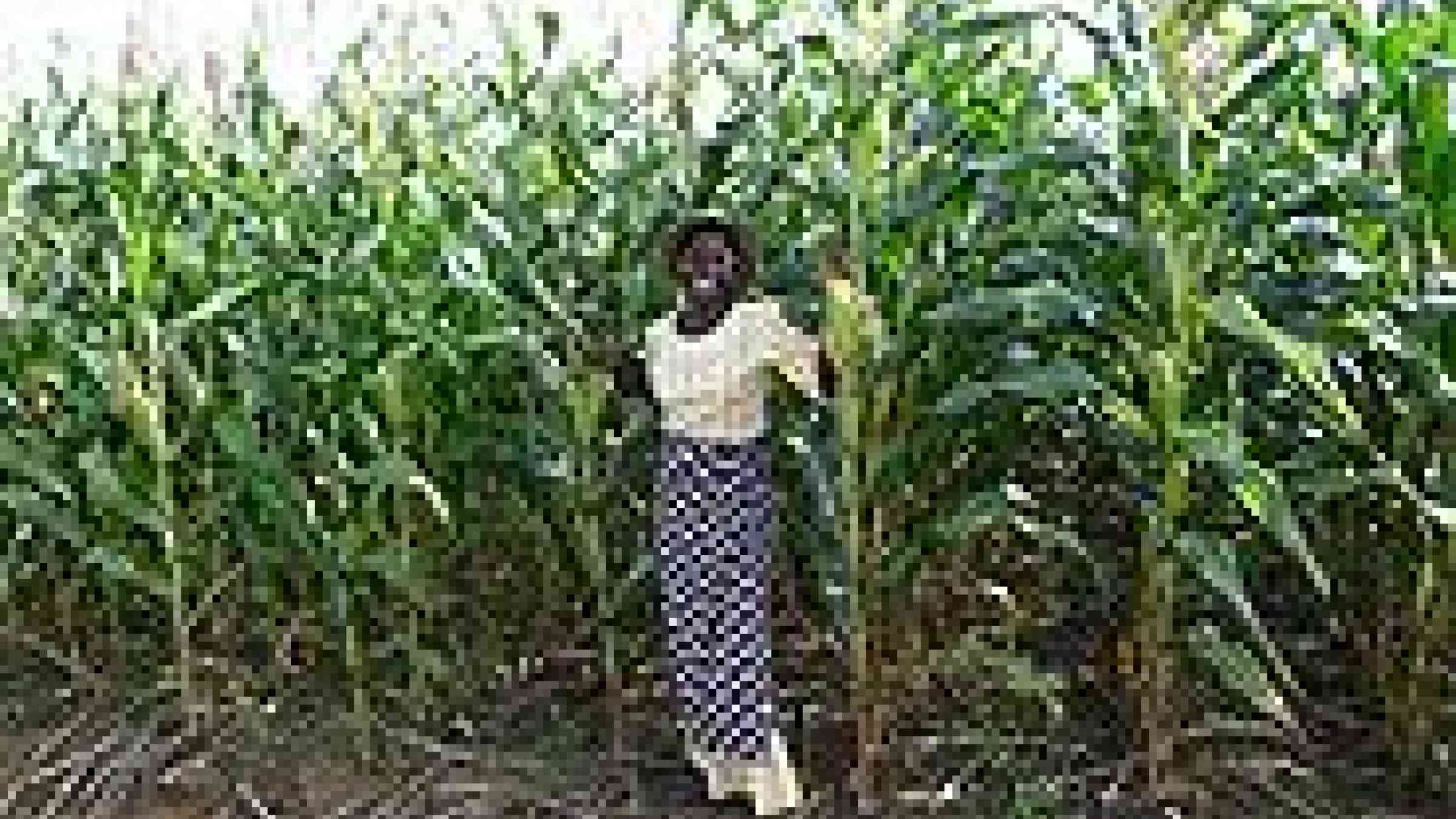UNDP’s disaster risk reduction initiatives give hope to communities

Mrs. Gloria Thole of Traditional Authority Mbenje in Nsanje district and her family every rainy season abandoned their home for fear of being swept away by floods.
Nsanje and Chikhwawa districts in Southern Region of Malawi are flood prone areas due to their geographical location near the Shire River. For decades, communities lost crops, property and families displaced due to flooding.
However, Mrs. Thole said the situation has changed following the various disaster risk reduction initiatives being implemented in the districts supported by UNDP with funding from the Irish Government.
“Every rainy season, we left our home to seek shelter far from here. As you can see, the veranda of my house is gone. It was washed away by floods. And during this time, we could not grow crops. Hunger was the order of the day. The crops that we grew were washed away by rain,” explained Mrs. Thole.
Some of the initiatives include construction of dykes along the Lalanje River, a tributary of the Shire River, construction of dams, river banks, to mention but a few. These are coordinated by Goal-Malawi; a UNDP funded local Non-Governmental Organisation that works with the communities on the disaster risk reduction initiatives.
“Things have changed. For the past two years, we have not experienced worse effects of the flooding as compared to previous years. In fact for the first time in our history, we never relocated during the last rainy season. This to us is a great achievement. We are now able to grow crops,” she said.
Traditional Authority Mbenje is another victim of the flooding of the Shire River. Because of flooding every rainy season, his headquarters were shifted from the original place, which was situated about 10km from the Lalanje River. “My ancestors used to be here, but because of flooding the headquarters of Traditional Mbenje were shifted down near the M1 road,” said Traditional Authority Mbenje.
Lalanje Primary School situated about 13 kilometres from Lalanje River was also abandoned due to frequent flooding. All pupils were transferred. According to Traditional Authority Mbenje, there are plans to re -open the school since the situation has improved.
The flooding prompted government to ask all people near the Shire River to relocate to upper areas. However, a majority refused citing fear of losing their identity and ancestral land, among other reasons.
The Disaster Risk Reduction (DRR) project aims at reducing the vulnerability of households through mainstreaming DRR and strengthening the co-ordination of flood preparedness and mitigation in Chikhwawa and Nsanje districts as well as nationally.
Before Goal Malawi came in to support the construction of dykes, the communities themselves, having realised the threat caused by flooding, had initially formed Area and Village Protection Committees which mobilised manpower to remove the silt from the river.
However, the work was not as effective since they were using traditional equipment such as hoes. Another challenge was that people lacked motivation since it was voluntary work.
Hence Goal Malawi, with UNDP support last year came in with technical expertise and offered cash for work. A tractor was deployed, dredging the silt with ease.
Goal Malawi Assistant Country Director, Pettri Siikanen said that the construction of dykes along the Lalanje River was done by the communities themselves. About 420 households from Chikhwawa and Nsanje districts were involved in the cash for work exercise.